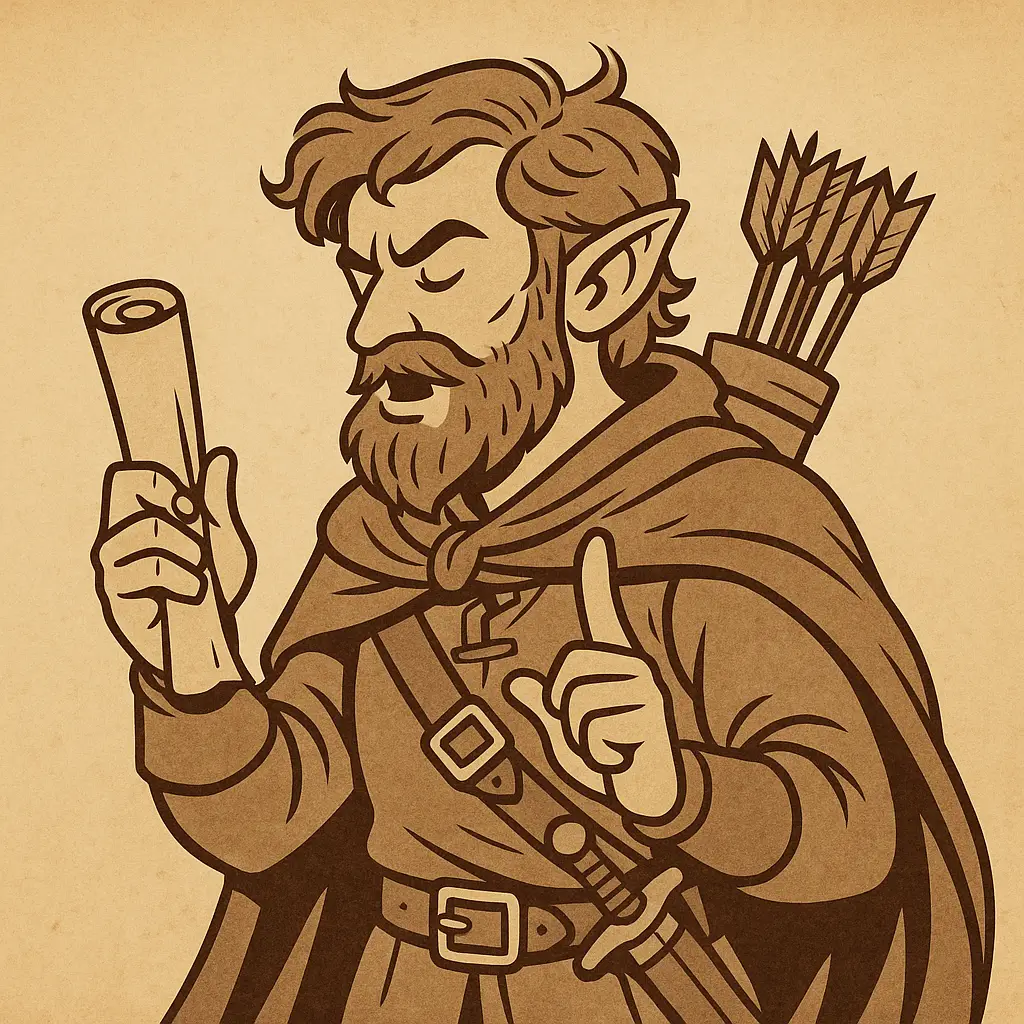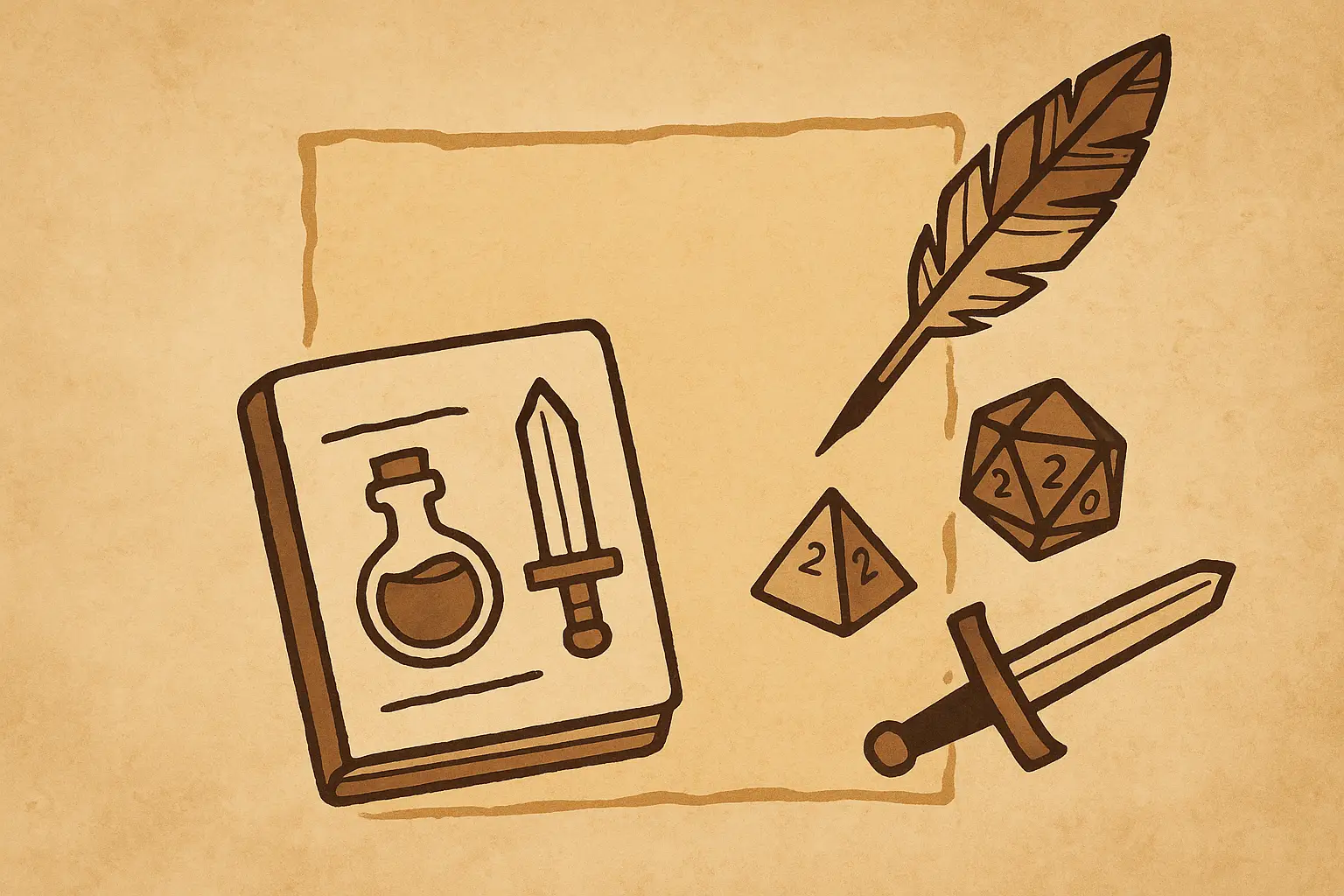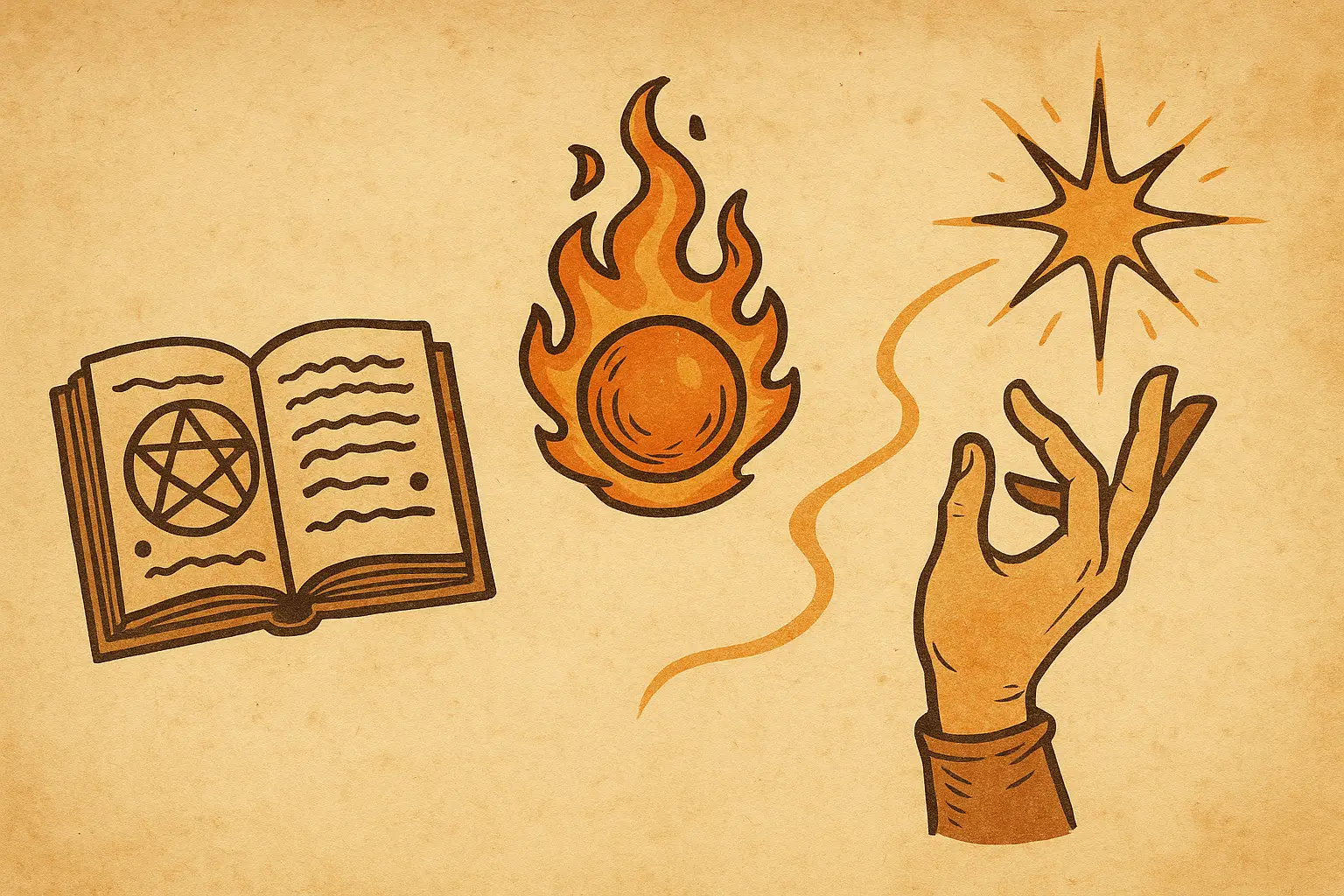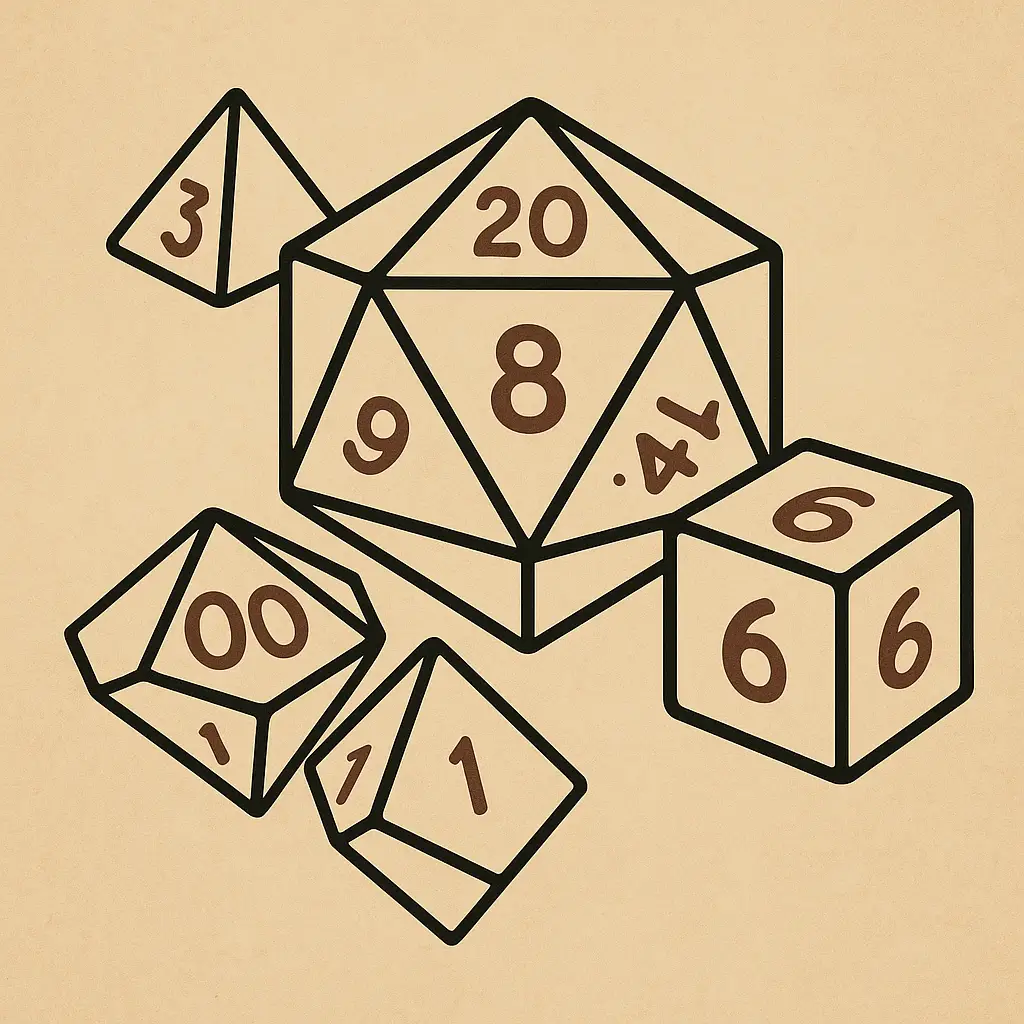How to immerse yourself, elevate the story, and make your character unforgettable
We all know the moment:
You’re in a tense scene. The villain is monologuing. The torches flicker. Your party’s rogue is negotiating with a crime lord in the backroom of a smoky tavern.
And then—
Someone says, “Wait, did we level up?”
Someone else adds, “Hang on, I need to go microwave something.”
The magic breaks.
Staying in-character isn’t just about talking in a funny voice or wearing a cloak. It’s about commitment. It’s about inhabiting a fictional person—their thoughts, their fears, their flaws—and bringing that energy to the table session after session.
Done well, it’s transformative.
Done poorly—or ignored altogether—and even the best-planned campaigns can feel flat, disconnected, or simply “meh.”
This blog isn’t about rules or crunch. It’s about how to stay in character, keep the table immersed, and build scenes that matter—to your character, your story, and your group.
🧠 Why In-Character Roleplay Matters
Before we dive into techniques, let’s talk about the why.
Staying in-character:
- Helps you make decisions organically (What would my character do?)
- Builds emotional resonance (You care about what happens because your character does)
- Increases immersion for everyone at the table
- Makes sessions feel like stories, not mechanics
When a table commits to roleplay—even imperfectly—it changes the vibe. The game stops being “what can I roll to do this” and starts being “what do I say, feel, or reveal?”
And that’s where the magic happens.
🎭 Tip 1: Know Your Character’s Voice (Without Needing an Accent)
Voice doesn’t mean vocal cords—it means perspective.
You don’t need a flawless British accent or throat-shredding growl. What you do need is consistency in:
- Word choice
- Attitude
- Emotional reactions
Ask yourself:
- Is your character blunt or poetic?
- Do they speak formally, or use slang?
- Are they a rambler? Or someone of few, carefully chosen words?
- Do they call enemies “scum,” “gentlefolk,” or “colleagues”?
A paladin might say:
“We must face the coming trial with honor, blade ready and conscience clear.”
A rogue might say:
“I’m not dying in a puddle over your sense of nobility.”
Let that style guide your dialogue, even if you speak in your own voice.
📖 Tip 2: Use Character Knowledge—Not Player Knowledge
This is the cornerstone of staying in-character.
It’s tempting to use what you, the player, know:
- The monster is weak to fire.
- That NPC is shady (because you read their stat block last week).
- You know what’s in the next room from the module online.
But your character doesn’t know that.
So instead:
- Ask the GM questions your character would think of
- Have your character guess or speculate—incorrectly, if appropriate
- Make mistakes based on character perspective
Example: You, the player, know the king is lying. But your wide-eyed cleric believes in divine justice and royal honesty. Play the cleric.
Mistakes driven by in-character thinking lead to drama, growth, and better stories.
🎯 Tip 3: Make Decisions Based on Personality, Not Optimization
Sometimes the most interesting character choices are suboptimal.
- You choose to parley instead of stab.
- You risk yourself for a stranger.
- You refuse to work with a necromancer, even if they’re tactically useful.
Why? Because your character would.
Build a character with:
- A flaw that influences decisions
- A goal that may override tactics
- A belief that could blind them to the obvious
Let the dice fall where they may. Your party (and GM) will love you for it.
A fully optimized character is a spreadsheet. A flawed character is a protagonist.
💬 Tip 4: Use First-Person Speech (When You Can)
Instead of:
“My character says he agrees.”
Try:
“I’m with you. Let’s see how deep this rabbit hole goes.”
First-person speech brings immediacy and drama. It blurs the line between you and the role you’re playing—in the best way.
That said, don’t force it. If you need to speak out-of-character, do it. But try to default to:
- Saying your dialogue aloud, in character
- Describing your actions from their viewpoint (“I slam the door behind me”)
Even if your voice isn’t different, your intention will be.
🎭 Tip 5: React to What Other Characters Say
Don’t just wait for your turn—listen and respond.
When another character shares a secret, drops a threat, or makes a joke:
- Ask them why
- Disagree with them
- Laugh, flirt, challenge, confess, ignore
Reacting makes the game feel like a living scene, not a turn-based drama.
Bonus: It’s a great way to spotlight other players.
“You said your brother vanished in that town? …My cousin was taken by the same slavers. I’m coming with you.”
This builds relationships—and memorable party dynamics.
📦 Tip 6: Pack Small Details and Use Them Often
You don’t need a tragic opera to stay in-character. Small details help a lot.
Examples:
- A nervous tick (tapping a ring, sharpening a dagger)
- A repeated phrase (“Bless the bones.” or “Burn it all.”)
- An item you keep and reference (amulet, photo, letter)
These become character anchors—little habits that signal “I’m in-character now.”
When used consistently, they feel like part of who your character is.
“As he speaks, I just keep polishing my dagger. I’m not listening—but he doesn’t need to know that.”
🕰 Tip 7: Stay in the Moment
This is a tough one.
It’s easy to break character when:
- A joke hits
- Rules are disputed
- Someone forgets their spell
- Pizza arrives
Don’t feel bad. Tabletop games are social and chaotic.
But once the scene resumes, try this:
- Take a breath
- Look down at your character sheet
- Think: What does my character want in this scene?
Then speak. Or act. Or decide.
Even a quick 3-second reset helps you re-enter character mindspace.
📖 Tip 8: Use a Short Backstory to Guide Roleplay
You don’t need 10,000 words. You need 3-5 character-defining facts:
- Where you’re from
- What you’re afraid of
- What you want
- What you regret
- Who you’ve lost or left behind
Keep these in your mind—or on a sticky note.
Then, in-character moments naturally arise:
- You avoid the sea because your brother drowned.
- You overreact when the party takes a child hostage.
- You laugh when someone misquotes a sacred text—because you wrote it.
🧪 Tip 9: Use Conflict and Compromise
In-character conflict adds depth, not dysfunction.
Don’t be afraid to:
- Disagree with the paladin
- Doubt the warlock
- Question the plan
As long as:
- You don’t derail the game
- You distinguish between in-character and out-of-character conflict
- You give room for compromise
Conflict drives story. Just keep it constructive.
“I don’t trust her. I’ll go, but I want my blade ready.”
Boom. Tension and teamwork.
🧠 Tip 10: Forgive Breaks—And Return to Form
You will:
- Break character
- Make a meta joke
- Get distracted by snacks
- Have out-of-character arguments
That’s okay.
Staying in-character is an aspiration, not a requirement.
What matters is:
- A shared commitment to return
- Clear table etiquette for when roleplay is “on” and “off”
- A group vibe that encourages immersion but allows breaks
🪞 Bonus: Questions to Ask During Roleplay
When you’re stuck, use these internal prompts:
- “What does my character want right now?”
- “What are they afraid will happen next?”
- “Who do they trust here?”
- “What memory does this moment bring up?”
These help you make decisions from within the character.
📚 Examples of Great In-Character Moments
Need inspiration? Here are real examples from memorable campaigns:
- A player’s rogue refused to enter a haunted house because it reminded them of their childhood home. It delayed the mission—but deepened their backstory.
- A bard who always told stories about others finally admitted they had no idea who they really were.
- A fighter gave their magic sword to an NPC child because “he needed it more.”
These aren’t just good roleplay. They’re story gold.
🎯 Final Thoughts: It’s a Muscle, Not a Switch
Staying in-character takes:
- Practice
- Intention
- Group support
You won’t do it perfectly every session.
But each time you lean into your character—each decision, each line, each awkward silence or bold monologue—you build a stronger, more immersive game.
So next session, breathe in.
Step into someone else’s shoes.
And see what happens when you let the character live through you.



